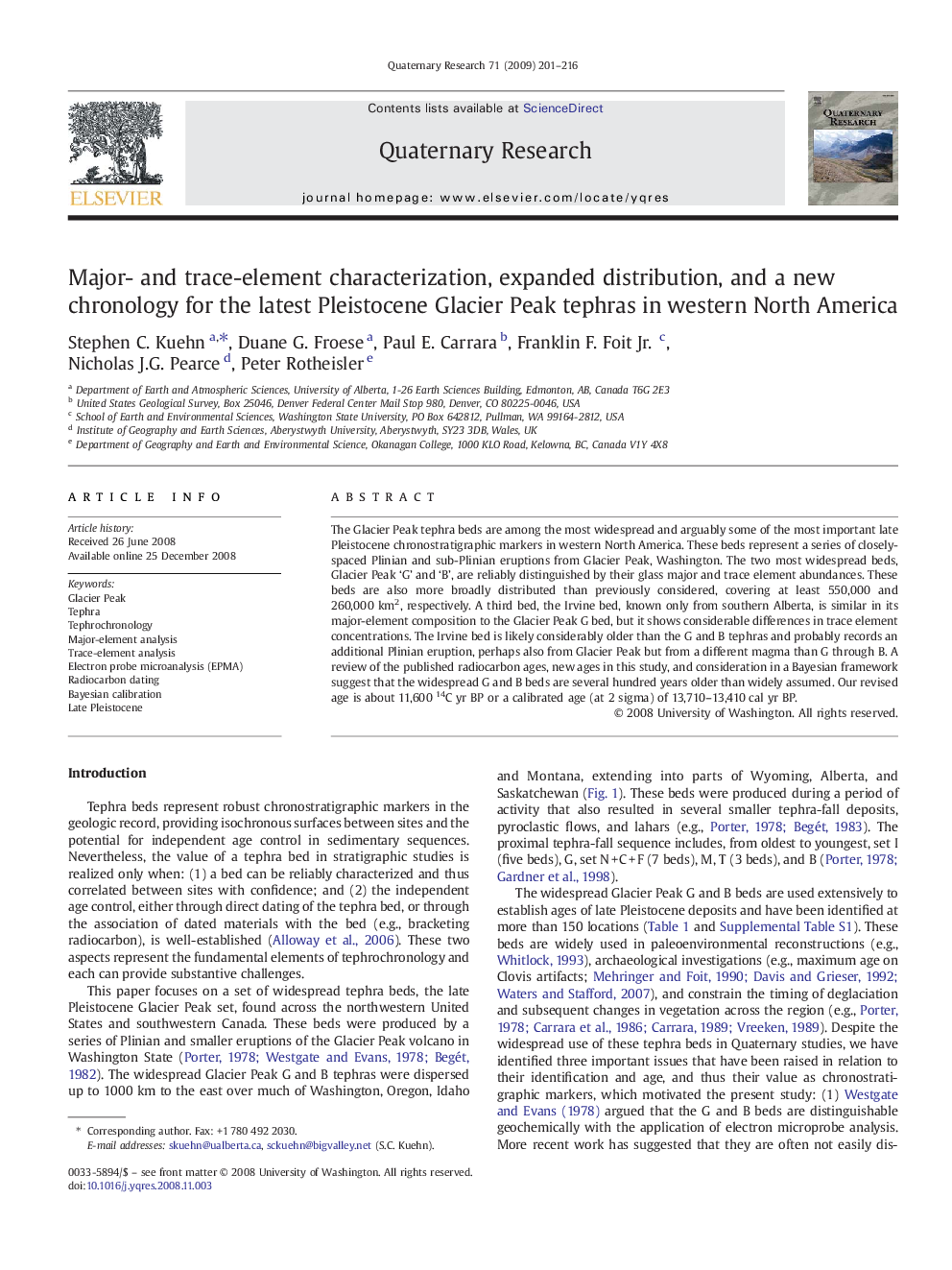| Article ID | Journal | Published Year | Pages | File Type |
|---|---|---|---|---|
| 1046081 | Quaternary Research | 2009 | 16 Pages |
The Glacier Peak tephra beds are among the most widespread and arguably some of the most important late Pleistocene chronostratigraphic markers in western North America. These beds represent a series of closely-spaced Plinian and sub-Plinian eruptions from Glacier Peak, Washington. The two most widespread beds, Glacier Peak ‘G’ and ‘B’, are reliably distinguished by their glass major and trace element abundances. These beds are also more broadly distributed than previously considered, covering at least 550,000 and 260,000 km2, respectively. A third bed, the Irvine bed, known only from southern Alberta, is similar in its major-element composition to the Glacier Peak G bed, but it shows considerable differences in trace element concentrations. The Irvine bed is likely considerably older than the G and B tephras and probably records an additional Plinian eruption, perhaps also from Glacier Peak but from a different magma than G through B. A review of the published radiocarbon ages, new ages in this study, and consideration in a Bayesian framework suggest that the widespread G and B beds are several hundred years older than widely assumed. Our revised age is about 11,600 14C yr BP or a calibrated age (at 2 sigma) of 13,710–13,410 cal yr BP.
